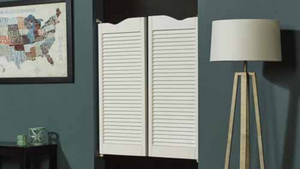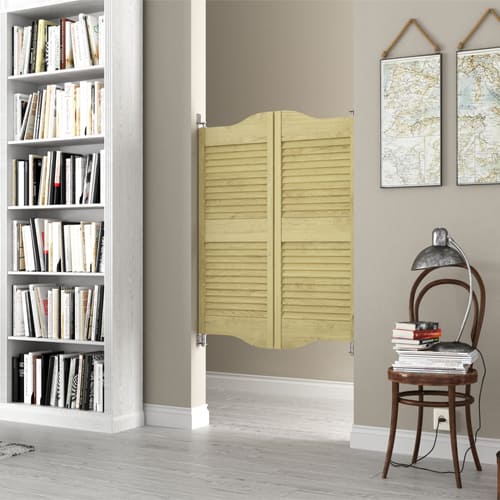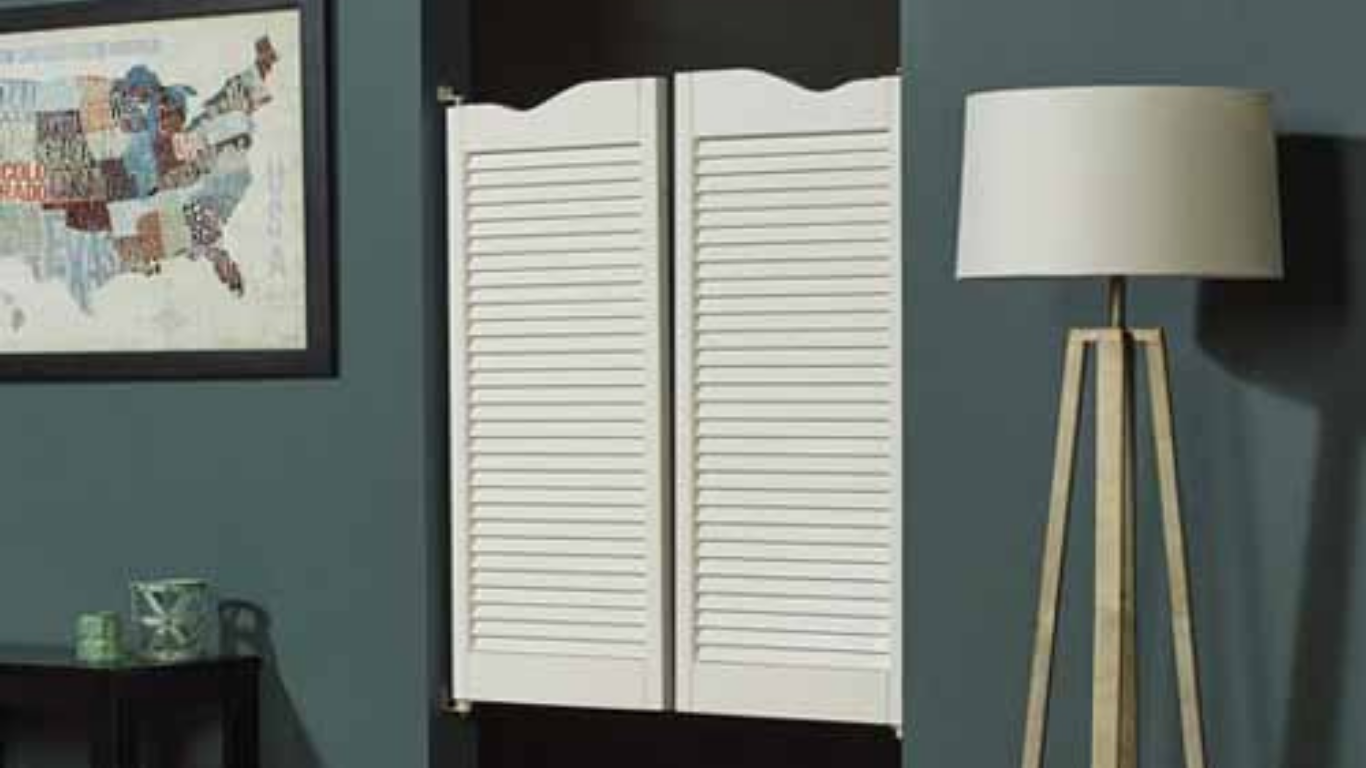
When to Use Traffic Doors vs Swinging Café Doors
When to Use Traffic Doors vs Swinging Café Doors
Introduction
Choosing the right doors for your space can make a huge difference in functionality and aesthetics. Whether you're outfitting a bustling restaurant or a warehouse, doors serve as more than just a passageway—they play a vital role in the daily operation of your business. Two popular options are traffic doors and swinging café doors, each offering unique benefits and suited to different environments. In this article, we’ll break down the differences and guide you on when to use traffic doors vs swinging café doors for your space.
Key Takeaways:
- Traffic doors: heavy-duty, impact-resistant—best for high traffic and temperature zones.
- Café doors: light-duty, decorative—ideal for casual, low-traffic separations.
- Decide by traffic, durability, ADA needs, and budget—both customizable.
What are Traffic Doors?
Traffic doors, sometimes known as impact doors or double-acting doors, are heavy-duty doors commonly used in high-traffic environments. They can swing both ways, allowing easy movement of people and equipment, and are designed to withstand constant use.
Key Features of Traffic Doors
- Durable, designed to handle frequent opening and closing
- Can swing both ways, making them ideal for environments where hands-free operation is essential
- Often equipped with rubber bumpers or kick plates for extra protection
Common Materials for Traffic Doors
Traffic doors are typically made of sturdy materials such as heavy-duty plastic, stainless steel, or aluminum. These materials help ensure that the doors are resistant to impacts and wear and tear over time.
What are Swinging Café Doors?
Swinging café doors, also known as saloon doors, are lightweight, double-hinged doors that swing open both ways. These doors are often seen in cafés, bars, and homes where they provide a casual yet functional barrier.
Key Features of Swinging Café Doors
- Swing both ways, allowing easy movement between rooms
- Typically half-height, offering separation without closing off visibility entirely
- Adds a decorative element to the space
Common Materials for Café Doors
Café doors are usually made from lightweight wood, metal, or composite materials, which makes them easy to install and operate.
The Purpose of Traffic Doors
Traffic doors are designed for high-traffic environments where functionality and durability are key. They are commonly found in commercial kitchens, warehouses, and supermarkets.
Ideal Locations for Traffic Doors
- Industrial kitchens
- Warehouses and storage areas
- Supermarkets and large retail spaces
Benefits of Using Traffic Doors
- Helps maintain temperature zones (cold storage areas, etc.)
- Reduces noise pollution between busy areas and customer zones
- Durable enough to handle frequent impacts from carts, trolleys, or equipment
The Purpose of Swinging Café Doors
Swinging café doors are typically used in more casual, aesthetic-driven spaces. They add a charming and rustic feel to any environment, while still providing a functional barrier.
Where Swinging Café Doors Work Best
- Cafés and bars
- Restaurants with an open kitchen concept
- Residential spaces like kitchens or home bars
Enhancing Ambiance with Café Doors
Café doors don’t just serve a practical purpose—they can also enhance the overall ambiance of your space, making it feel more inviting and relaxed. This makes them especially popular in environments where style is as important as function.
Traffic Doors vs Swinging Café Doors: Key Differences
When deciding between traffic doors and café doors, it’s essential to understand their differences.
Functionality Comparison
Traffic doors are built for heavy-duty use and can withstand frequent impacts, while café doors are lightweight and more decorative, making them ideal for lower-traffic areas.
Design and Aesthetic Differences
Traffic doors are typically more utilitarian in design, while café doors focus on aesthetics, offering a classic, vintage look that suits a relaxed, casual environment.
Durability and Strength Comparison
Traffic doors are much more durable and suited for industrial settings. Café doors, while functional, are not built to handle heavy impacts and are better for lighter use.
When to Choose Traffic Doors
High-Traffic Areas
If your space experiences heavy foot traffic or the frequent movement of equipment, traffic doors are the ideal choice.
Industrial and Commercial Applications
From kitchens to warehouses, traffic doors offer the durability and ease of movement that commercial spaces require.
Temperature Control Benefits
In areas where maintaining a consistent temperature is crucial, such as cold storage rooms, traffic doors can help by reducing air exchange between rooms.
When to Choose Swinging Café Doors
Casual and Aesthetic-Driven Spaces
Café doors are perfect for areas where style and aesthetics are a priority, such as cafés, bars, and restaurants.
Lightweight and Easy Installation
If you’re looking for something easy to install, café doors are a great option. They’re lightweight and often come in a variety of styles that can be tailored to your space.
Installation and Maintenance of Traffic Doors
Steps for Installing Traffic Doors
Installing traffic doors typically involves mounting them on a double-acting hinge system, ensuring smooth and durable operation.
Maintenance Tips
To keep traffic doors in good condition, regularly check the hinges and bumpers, and clean the surfaces to prevent wear from constant use.
Installation and Maintenance of Swinging Café Doors
Simple Installation Guide
Swinging café doors are generally easy to install and can be done with basic tools. Many come in pre-finished kits that make the process straightforward.
Maintenance Tips
Café doors require minimal maintenance, but occasional tightening of hinges and cleaning will ensure they remain functional and attractive.
Cost Considerations
Pricing of Traffic Doors
Due to their heavy-duty nature, traffic doors are typically more expensive than café doors, especially for custom sizes or materials.
Pricing of Swinging Café Doors
Café doors are generally more affordable and cost-effective for lighter-use areas. They’re a great choice if you’re looking for an economical way to add style to your space.
Customizing Your Doors
Both traffic and café doors can be customized to suit your space. You can choose different materials, colors, and finishes to match the aesthetic of your environment.
Design Options for Traffic Doors
From stainless steel finishes to clear plastic inserts, traffic doors can be tailored for both function and design.
Design Options for Café Doors
Café doors offer more variety in terms of style, with many options available in wood, metal, or even glass, making them perfect for adding a decorative touch.
Accessibility Concerns
ADA Compliance for Traffic Doors
Many traffic doors can be customized to meet ADA requirements, ensuring that they are accessible to all users.
ADA Compliance for Café Doors
Although less common in commercial settings, café doors can also be installed in compliance with ADA guidelines, depending on the specific needs of the space.
Energy Efficiency and Sustainability
Energy-Saving Features of Traffic Doors
In areas where temperature control is vital, traffic doors can help reduce energy costs by minimizing air exchange between spaces.
Eco-Friendly Benefits of Café Doors
Café doors can be an eco-friendly choice if made from sustainable materials like reclaimed wood, reducing their environmental impact.
Conclusion
In the end, the choice between traffic doors and swinging café doors comes down to the specific needs of your space. If you're running a high-traffic commercial kitchen or warehouse, traffic doors are your best bet for durability and functionality. However, if you’re looking to add charm and style to a café or bar, swinging café doors are the perfect solution. Consider the traffic flow, aesthetic, and practical needs of your environment to make the best decision.
FAQs
- What are traffic doors best used for?
Traffic doors are ideal for high-traffic areas such as industrial kitchens, warehouses, and supermarkets. - Can swinging café doors be used in commercial spaces?
Yes, but they are better suited for aesthetic-driven spaces like cafés or restaurants with light foot traffic. - How often should traffic doors be maintained?
Traffic doors should be inspected and maintained regularly, especially in high-use areas. Check hinges and bumpers monthly. - Are there soundproof options for traffic doors?
Yes, some traffic doors come with soundproofing features, which are ideal for noisy environments like commercial kitchens. - Can café doors be customized?
Absolutely! Café doors can be tailored to match your décor with various materials, finishes, and styles available.



